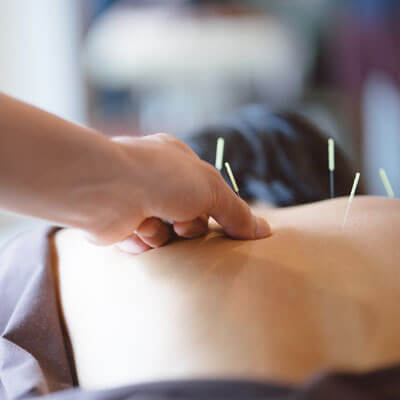Dry Needling at Little Mountain Chiropractic & Wellness
 Also called myofascial trigger point dry needling or intramuscular manual therapy, dry needling is a procedure often performed along with other types of care for pain management. During this therapy, “dry” needles are inserted into the skin in areas of pain. This results in the trigger or stress points being released to decrease pain and increase range of motion. Recent research shows that dry needling can be beneficial in easing muscle tension, pain and dysfunction.
Also called myofascial trigger point dry needling or intramuscular manual therapy, dry needling is a procedure often performed along with other types of care for pain management. During this therapy, “dry” needles are inserted into the skin in areas of pain. This results in the trigger or stress points being released to decrease pain and increase range of motion. Recent research shows that dry needling can be beneficial in easing muscle tension, pain and dysfunction.
New Patients
What Are Trigger Points?
These are bands of skeletal muscle located within a larger muscle group. They are essentially a “knot” in a muscle, which feels painful when pressure is applied externally. Trigger points develop in traumatically injured or overused muscles, often due to car accidents or sports injuries. Our physical therapist will use needling therapy to relax the trigger points and reduce pain.
Dry needling therapy is safe when performed by certified and skilled professionals, like our therapists at Little Mountain Chiropractic & Wellness. Its main purpose is to facilitate the healing of tissue cells and restore muscle function. It can help with conditions such as
- Hip pain
- Knee pain
- Muscle strains
- Muscle sprains
- Fibromyalgia
- Headaches
- Sciatica
- Carpal tunnel syndrome
- Tendonitis
- Neck pain
- Back pain
- Tennis elbow
- Plantar fasciitis
- Car accident injuries
- Trigger points – muscle knots
The process of inserting a needle into the tissue disturbs the muscles’ electrical activity, which short circuits the nervous system and causes it to reboot itself. This process of rebooting helps restore normal neural input. Dry needling also reduces the electrical activity of the muscle, effectively reducing tension. The needle allows your therapist to target tissues that are not accessible using manual therapies.
First, your therapist will examine you to determine if the trigger points may be a source of your pain or dysfunction. They will insert very fine acupuncture needles into areas of trigger points. These needles are as fine as human hair, and most patients do not experience any pain when the needle is inserted.
The needle triggers a “latent twitch response,” which is a micro-spasm that deactivates the trigger point. You may feel pressure or an ache when the trigger point is deactivated. This may last from a few minutes to a few days. The entire procedure takes about fifteen minutes, and you may experience pain relief that lasts from a few hours to several weeks.
While the side effects are usually minor, you may experience some soreness, bruising at the needle site, fatigue or lack of energy. Make sure to drink plenty of water after your session.
After the procedure is complete, our therapist will work with you to create a personalized plan that uses the benefits of dry needling, along with other necessary therapies. The cost of dry needling depends on your specific condition and whether you are going for an initial session or a follow-up visit.
Please note that dry needling and acupuncture are not the same. Though similar tools are used in both procedures, dry needling is focused on stimulating the muscles to get them to release. In contrast, acupuncture is based on channel theory and uses points to heal the body through natural means.
Schedule Today
Find out how dry needling may benefit you. Contact us today to book an appointment.
